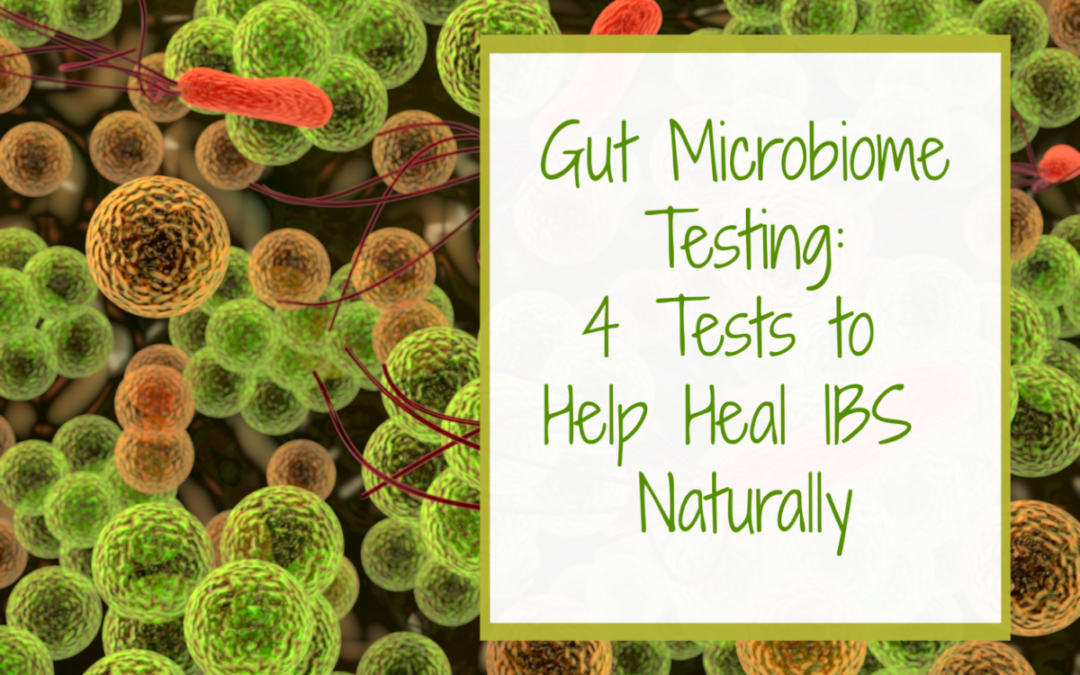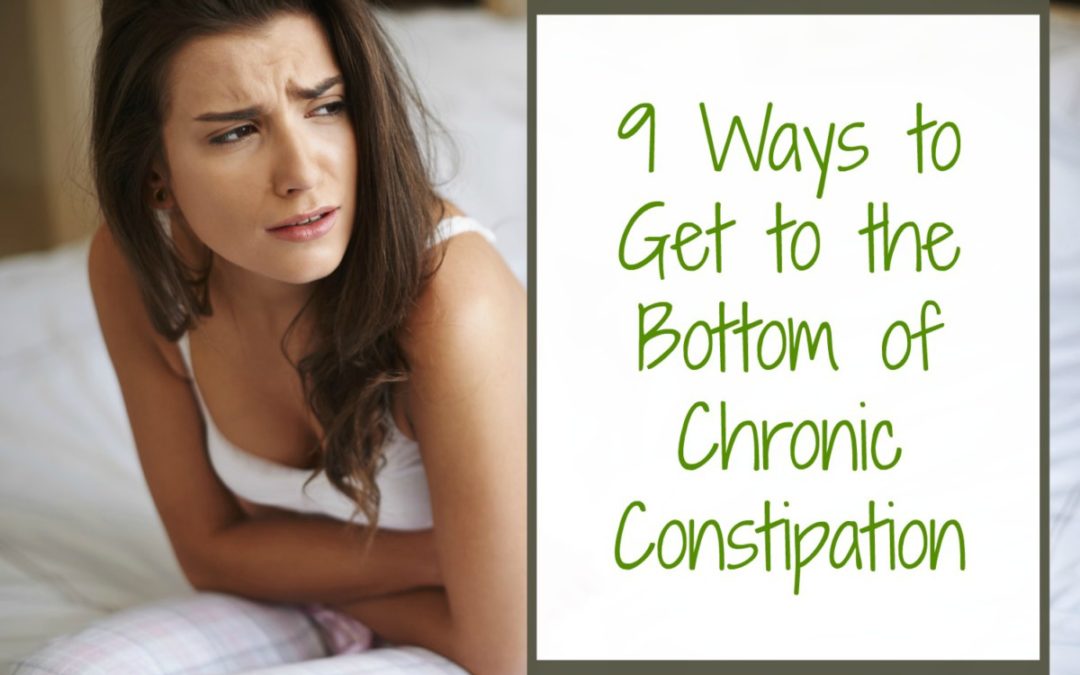
Gut Microbiome Testing: 4 Tests to Help Heal IBS Naturally
If you’ve been diagnosed with IBS, or another digestive illness, you may have been told there’s not much you can do, other than change your diet. And while diet changes are foundational for success with your IBS, there is a lot of useful information to be gained by gut microbiome testing using functional labs.
As many as 80% of IBS sufferers may in fact have SIBO, or Small Intestinal Bacterial Overgrowth as a primary cause of their symptoms. And other types of gut dysbiosis has been shown to be associated with IBS as well.
To create a meaningful strategy for healing from IBS and other digestive challenges, it’s important to do gut microbiome testing because choosing the right strategy requires knowing which types of organisms are overgrown.
Read on for a gut microbiome testing overview, and to learn which specific labs I use with my clients.
What is Gut Microbiome Testing?
With the recent evolution of DNA-PCR technology, it’s become easier and more affordable than ever to do DNA gut microbiome testing. Several labs have developed technology to identify the presence or absence of particular microorganisms in a sample of stool.
We all have a prolific community of miocroorganisms in and on our bodies, including bacteria, yeasts, parasites, and viruses. Some writers and researchers have said that our communities of microorganisms outnumber our individual cells! These communities are an integral part of maintaining our digestive function.
Gut microbiome testing uses DNA analysis to find out whether there are known pathogenic, or infectious, microorganisms in our digestive system. Some gut bugs are normal residents, but can cause problems if there are too many of them, while others are non-normal residents and can cause symptoms and illness.
Before DNA testing was available, most gut microbiome testing was done by culturing a stool sample for bacteria and yeast, and physically looking for evidence of parasites, such as eggs or parasite bodies, with a microscope. The huge advantage of using DNA testing is that it can detect much smaller quantities of organisms than can be visually seen. Labs claim that they can detect down to 3-5 cells worth of an organism by identifying its DNA fingerprint.
Gut Microbiome Testing for IBS and Other Digestive Problems
Because an irregular microbiome is a hallmark of chronic digestive problems, using gut microbiome testing can provide you with important direction when planning your individualized plan for healing.
The symptoms of IBS, IBD, Crohn’s Disease, SIBO, Celiac disease, and other digestive related disorders are similar, but the approach to helping you reach remission will be unique and individual to you. Likewise, symptoms of infection with parasites, bacteria, or yeasts are similar, but the best approach for each situation is different.
It’s always best to test, not guess to move forward with the most accurate and specific information possible, so you can create the most personalized plan.
Gut Microbiome Test #1: Diagnostic Solutions Laboratory GI-MAP
The GI-MAP is a stool test. Using the scoop in a little test vial with preservative solution in it, you collect stool at home, and ship it back to the lab for testing.
The GI-MAP test is my go-to gut microbiome test for these reasons:
- Thorough testing for the best normal and worst pathogenic players, including H. pylori, C. difficile, Giardia, Enterotoxigenic E. coli, Klebsiella pneumoniae, Bifidobacteria spp., Lactobacillus spp., Blastocystis hominis, Dientameoba fragilis, Candida albicans, and parasitic worms.
Includes markers for gut health, including Secretory IgA, Anti-gliadin IgA, elastase, calprotectin, and more. - Its cost is reasonable compared to other similar tests.
- It is fairly often covered by insurance.
- It’s easy to collect your sample, doesn’t require complicated preparation like some other stool tests, and the sample doesn’t need to be mailed immediately.
Understanding particularly which types of organisms are likely contributing to your problem is essential to creating your healing strategy. For example, if parasites are present, it’s important to address them first, before working on bacteria or yeast. Or, if yeast overgrowth is the only thing that shows up, then the appropriate strategy would be different.
Gut Microbiome Test #2: SIBO 3-Hour Lactulose Breath Test by BioHealth Labs
It’s estimated that a high number of IBS patients actually have SIBO (Small Intestinal Bacterial Overgrowth), which is an overgrowth of normal bacteria that has migrated from the large intestine to the small intestine.
To take the Biohealth Labs SIBO test, you prepare a day ahead of time with a special diet, and then drink a lactulose solution. You then collect breath samples into glass tubes every 20 minutes (materials are all included in the test kit) for 3 hours. You mail these back to the lab for analysis.
If you have a bacterial overgrowth in your small intestine, levels of hydrogen and methane gas will spike during the 3-hour period.
SIBO is notoriously difficult to resolve, but knowing which type you have is critical for reaching resolution, because the healing approach for each type is different.
Gut Microbiome Test #3: Intestinal Permeability (IP) Testing by Genova Labs
The Intestinal Permeability test by Genova Diagnostics is not a specific gut microbiome test, but it can show you how leaky your gut is. When your gut is permeable, proteins that shouldn’t be able to cross into the bloodstream are able to do so. This is an acknowledged autoimmune trigger, and also can leave your gut vulnerable to infection with pathogens.
This test doesn’t have a whole lot of clinical value, because we can assume a leaky gut if certain symptoms, such as multiple food sensitivities are present, but some people want to know for certain if their gut is leaky or not. This test answers that question.
Gut Microbiome Test #4: Mediator Release Test Food Sensitivity Testing by Oxford Biomedical OR IgG Food Sensitivity Testing by US Biotek or Genova Labs
Again, food sensitivity testing is not specifically Gut Microbiome testing, but food sensitivities are often a side effect of underlying infections or gut dysbiosis. I generally recommend my clients first use Food-Symptom Diary tracking to get clear on their own particular and unique triggers. (You can download your copy of my Food-Symptom Diary with instructions on how to use it here.) But sometimes, the situation is really confusing, or people are unable or unwilling to complete the full elimination diet process.
I recommend the Mediator Release Test (MRT) from Oxford Biomedical Food or IgG Food Sensitivity Testing by Genova Labs or US Biotek. Food sensitivity testing can help shorten the food sensitivity discovery process, and provide a useful place to start the diet modification while working on healing the gut microbiome.
How to Get Gut Microbiome Testing for IBS or Other Gut Challenges
While there are some gut microbiome testing services that are available to the public, the tests I have mentioned here require working with a practitioner who has an account. Though more and more traditional doctors are becoming aware of the value of gut microbiome testing for their patients, many are still not using it. Functional medicine doctors and practitioners are generally using these tests and principles in practice, as well as many nutrition practitioners as well.
Check out the following referral links to find a practitioner near you, or one who works online or long distance:
- Institute for Functional Medicine
- Functional Nutrition Alliance
- Functional Diagnostic Nutrition
- Receptor Health
Now that you know how important gut microbiome testing can be to finding your pathway to healing your gut or allergy symptoms, go get tested! I can provide access to all these tests I mention, in addition to others, as they may fit with your situation.
Not sure whether testing is right for you, or whether something else might be better first? I invite you to schedule a 30-minute Assessment Session with me to find whether testing is the next best step for you. I hope to meet you there.
